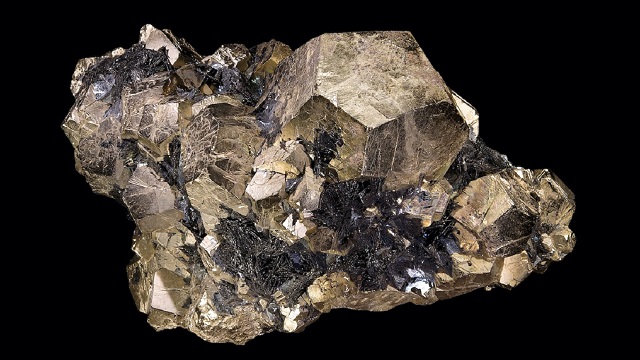Scientists have made fool’s gold magnetic, finally making it valuable for future technologies.
This resource is best suited to Year 8 and 10 Chemistry and Physics students who are learning about compounds, atomic structure and electrical energy.
Word Count: 430

Fool’s gold could actually be valuable, but only if you do something that no-one (fool or otherwise) has done before.
Scientists and engineers at the University of Minnesota, US, say they have electrically transformed abundant, low-cost, non-magnetic iron sulfide (also known as pyrite, as well as the more common fool’s gold) into a magnetic material.
It’s the first time that’s been done with any entirely non-magnetic material, they say, and could be the first step in creating new materials for energy-efficient computer memory devices.
“Most people knowledgeable in magnetism would probably say it was impossible… When we looked a little deeper, however, we saw a potential route, and made it happen,” says Chris Leighton, lead author of the team’s paper in the journal Science Advances.
He and colleagues have had their eye on iron sulfide for more than a decade for possible use in solar cells, but there hasn’t been a way to make it efficient enough to be viable.
At the same time, he says, they have been exploring magnetoionics, using electrical voltages to control magnetic properties of materials for potential applications in magnetic data storage devices. “At some point we realised we should be combining these two research directions, and it paid off.”
The aim is to manipulate the magnetic properties of materials with a voltage alone, with very little electrical current, which is important to make magnetic devices more energy-efficient.
Progress had been made, Leighton says, including turning on and off ferromagnetism, the most technologically important form of magnetism, in other types of magnetic materials. But iron sulfide offered the prospect of potentially electrically inducing ferromagnetism in an entirely non-magnetic material.
In their recent study, the researchers used a technique called electrolyte gating. They took the non-magnetic pyrite and put it in contact with an ionic solution, or electrolyte.
They then applied as little as one volt (less than a household battery), moved positively charged molecules to the interface between the electrolyte and the iron sulfide, and induced magnetism.
Importantly, they say, they were able to turn off the voltage and return the material to its non-magnetic state, meaning that they can reversibly switch the magnetism on and off.
“We were pretty surprised it worked,” Leighton admits.
“By applying the voltage, we essentially pour electrons into the material. It turns out that if you get high enough concentrations of electrons, the material wants to spontaneously become ferromagnetic, which we were able to understand with theory.
“This has lots of potential. Having done it with iron sulfide, we guess we can do it with other materials as well.”
Login or Sign up for FREE to download a copy of the full teacher resource





